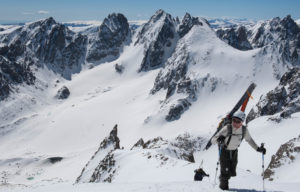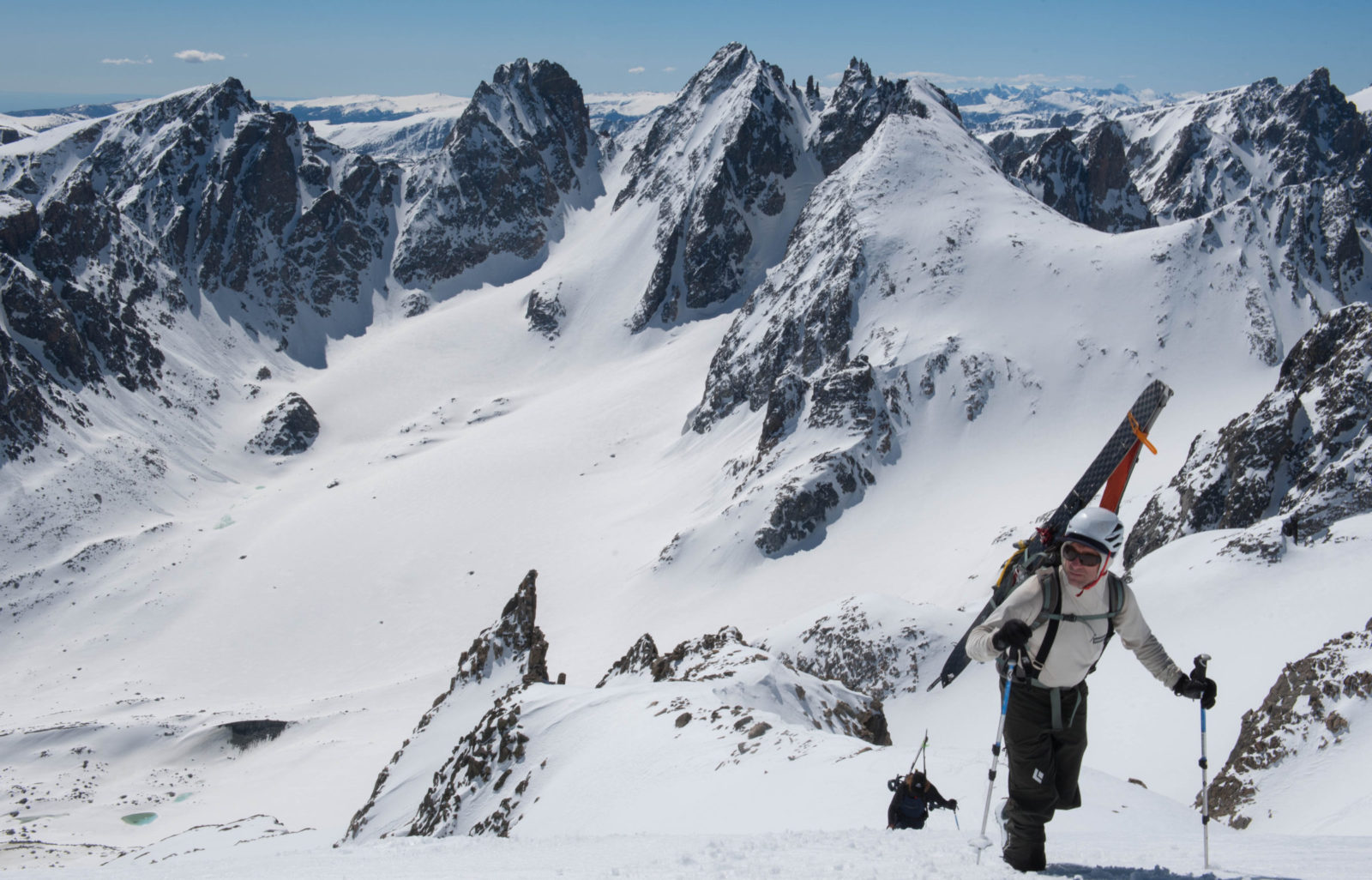One of the most frequent questions I get from clients is about what gear they should buy. For your first splitboard set up, here’s my suggestion:
With so many splitboards, bindings, boots, skins, trekking poles, and backpacks on the market this can be a very daunting task.
First off, let’s start with the boards. My preference for my freeride, powder chasing, and big mountain riding style has always been to have a splitboard and solid board that is built with a conventional camber shape running throughout the majority of the boards length combined with early rise (turned up or lifted) in the tip, otherwise known as S rocker.
This design, which is used in a majority of freeride split and snowboards combines the unmatched power and edge hold of traditional camber boards with the deep snow float of a reversed camber or rockered board (similar to that of a surfboard shape).
Having the “camber pocket” between your feet while in ride mode makes the splitboard feel more like a solid board than other hybrid camber/rocker designs. In addition, while in touring mode, the boards camber under your feet helps to decrease slipping while skinning by forcing more of the splits running length into the snows surface ensuring more traction with the climbing skins.

The amounts of camber and rocker throughout the boards profile will effect how the board rides in a variety of snow conditions. No one splitboard, like surfboards, wake surfers, wake boards, or skateboards will be best suited for every condition.
With that, I will say that a quiver of splits is a great answer. For most, unless you have deep pockets or a sponsorship, that may not be realistic. If you’re looking for a “do everything” board I suggest getting one that has traditional camber throughout most of the board with around 30cm of early rise in the nose. The cambered profile excels on firm terrain and while skinning, with the added bonus of float from the upturned nose.
Trying a splitboard before you buy one is a great way to figure out what type of board suits your personal riding needs. With splitboarding’s ever growing popularity, any good snowboard/ski/gear shop that caters to backcountry snowboarding should have a variety of splitboards to demo. Most, if not all, shops will deduct the cost of the demo from the retail price if you chose to buy from them.
Check out this informative link from Jones Snowboards:
https://www.jonessnowboards.com/base-camp/blog/splitboard-101-choosing-your-split.html

Good advice! I would also say “Buy what you know”. If you like your current solid board, try to find the closest thing to it in a splitboard. Throw in a slight bias towards more powder friendly shape (that’s why we’re out there, right?) and you’ll be pretty close. My first split was a 166, while my inbounds board was a 158. It took me too many days to figure out how to turn that huge thing. A 161 would have been a better plan for me at that time.